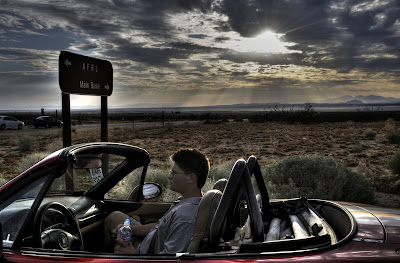
OK, most of the population doesn't even give a rip about HDR, or for that matter, have the slightest idea what it means even after you tell them it means High Dyanamic Range. But you're not most of the population. You scour the internet to read photo blogs, you get emails from DigitalPhotographySchool.com every morning and don't consider them spam, and you time your vacation request so you can shoot the full moon rising over Half Dome just like Ansel. But you still don't try HDR? Why? Reason #1, you've got to use a tripod. Reason #2 it's too complicated. Reason #3, you've got to buy special software. Well, here's an end around all three excuses. Number one, using the tripod. In order for HDR to work, you need to take multiple exposures of the (almost) exact same scene. With a still life, this is easy. With people, it's not. The shot you see here was shot handheld, but I used auto bracketing to take three separate exposures at +1.0/0/-1.0 exposure compensation in less than 1 second. Auto bracketing gets you around the tripod issue as long as you hold the camera steady for the whole tic-a-tic sequence. Number two, it's too complicated. No, not if you get the auto bracketing thing down and find a subject that doesn't have a lot of things that move in it. You need at least a three shot sequence, and you need to download a program called Photomatix from the web, pick out the three shot sequence, and drop the three images into Photomatix and follow the menu. Number three, it's too expensive. No, Photomatix lets you download their program for a long time for free. Eventually, it starts to put a watermark on your images to coerce you to buy the key, but by that time, you'll have made up your mind and you'll probably either love or hate HDR photos. Personally, I'm somewhere in the middle. I like the airbrushed look that HDR can produce, but I'm also kind of a purist who wants a shot to work right through the lens with no image manipulation. I do like HDR, and I use it when I've got extremely high contrast scenes to deal with that I know my chip won't be able to handle any other way. I go into this knowing ahead of time there's a risk my shot's going to look like the latest World of Warcraft ad graphic. The godbeams, and the details inside the car would never have shown up in a single exposure of this scene, but with the computer picking out the best of each of the three images, it's a winner. That is, unless you're one of those people who hates HDR, and most of the people who fall into that category are jealous photographers who've either never tried it or tried it but quit.

